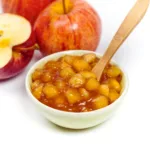From bone-dry to off-dry, there is no shortage of types of dry white wine. But if you’re new (or even not) to the wine world, you might think that your options are Chardonnay, Pinot Grigio, and Sauvignon Blanc. And yes, those are great options, but only the tip of the wine iceberg.
Here are 21 types of dry white wine to get you started. As an FYI, wines are listed in alphabetical order.
What Makes a White Wine (or any wine) Dry
The easiest way to think of dry white wine, or any wine, is that dry wine is not sweet. But what does that mean and why? Essentially, wine is dry when it doesn’t have residual sugars. But let’s take a step back.
We all know that wine comes from grapes. When grape juice is taking its journey from juice to wine, there is a fermentation process happening that produces alcohol. (This is why you get drunk off of wine but not grape juice.)
During the fermentation process, yeast is added to grape juice to consume sugar, producing alcohol. The longer the fermentation, the more sugar is turned into alcohol.
To make a dry wine, the winemaker allows the fermentation process to continue until most, if not all, of the sugar has been consumed by the yeast. In contrast, when making a sweeter wine, the winemaker will stop the fermentation process earlier than they would for a drier wine.
Types of Dry White Wine
Albariño
- Grape variety: Albariño
- Region of origin: Rías Baixas, Galicia, Spain
- Flavor profile: High acidity, crispness, refreshing, light-bodied, aromas of citrus, peach, apricot, and white flowers, saline minerality
- Food pairings: Seafood, shellfish, light pasta dishes
Albariño is a white wine grape variety that is primarily grown in the Rías Baixas region of Galicia, Spain, only about a 2 hours drive from Porto. Its proximity to its neighboring country to the South is also why this wine can be found produced in Portugal. Some areas of the United States also produce this wine.
Albariño is a dry white wine that is known for its high acidity, crispness, and refreshing qualities. Albariño wines are typically light-bodied and have aromas of citrus, peach, apricot, and white flowers. They are often described as having a saline minerality, which is influenced by the proximity of the vineyards to the Atlantic Ocean.
Aligoté
- Grape variety: Aligoté
- Region of origin: Burgundy region of France
- Flavor profile: Floral and herbal notes, with aromas of apple, unripe peach, and white flower
- Food pairing: Fish dishes, soups, salads, and cow’s milk cheeses
Aligoté is a white wine grape variety that is primarily grown in the Burgundy region of France, as well as in other parts of Europe (such as Bulgaria nad Romania) and the United States.
The grape is used to produce a varietal white wine and is sometimes included in the blend of Burgundian sparkling wine known as Crémant de Bourgogne.
Aligoté is often compared to Chardonnay, but it has a lighter body and higher acidity.
Assyrtiko
- Grape variety: Assyrtiko
- Region of origin: Santorini, Greece
- Flavor profile: High acidity, crispness, refreshing, light-bodied, aromas of citrus fruits, tropical notes, saline, and noticeable minerality
- Food pairing: Seafood dishes, grilled fish, oysters, shellfish, and Mediterranean tomato-based dishes
Assyrtiko is a white wine grape variety that is indigenous to the island of Santorini in Greece, but is now widely planted across mainland Greece as well as in parts of Australia.
These wines are typically light-bodied. The Assyrtiko is a versatile grape variety that can be made into various styles of wine and can even be blended with other white grapes such as Sauvignon Blanc, Sémillon, and Malagousia
Chardonnay
Chardonnay is a white wine that comes from the green-skinned grape variety of the same name. It is a cross between the Pinot Noir and Gouais Blanc grape varieties and was first grown in the small village of Chardonnay, located in the Burgundy region of France.
The world’s most popular white grape is able to be produced in quite a few different areas of the world and regions. With this said, the taste, depending on where it is grown and whether it is aged in an oak barrel or a stainless steel barrel, can affect the taste.
- Grape variety: Chardonnay
- Region of origin: Burgundy, France
- Flavor profile: Chardonnay is a versatile grape that can produce a range of styles, from light and elegant to full-bodied and buttery. It is usually made in a dry style, with flavors ranging from apple and lemon to papaya and pineapple, and it also shows notes of vanilla when it’s aged with oak. Chardonnay wines are typically medium- to full-bodied, with moderate acidity and alcohol. They pair well with seafood, chicken, pork, and vegetarian dishes.
- Food pairing: Chardonnay pairs well with a wide range of foods, including seafood, chicken, pork, and vegetarian dishes. With that said, the specific food pairing will depend on the style of Chardonnay. For example, a crisp, unoaked Chardonnay pairs well with fresh cheeses like goat cheese, as well as oysters, shellfish, or delicate fish. A full-bodied, oaked Chardonnay pairs well with grilled chicken or pork, creamy pasta dishes, or dishes with buttery sauces.
Chenin Blanc
Chenin Blanc is a white grape variety originally from the Loire Valley in France. But it’s not just produced in Europe, having gained popularity in other wine regions such as South Africa.
The grape is actually very versatile and can produce not only dry and off-dry wines but sweet and sparkling wines as well. Chenin Blanc wines are typically high in acidity and can age well, developing complex flavors over time.
- Grape variety: Chenin Blanc
- Region of origin: Loire Valley, France
- Flavor profile: A range of fruit, floral, and mineral notes
- Food pairing: Dry Chenin Blanc wines go well with lighter fare like seafood, chicken, and salads. Off-dry and sweeter versions can be excellent with spicy foods, as the sweetness can offset heat.
Chinuri
Chinuri is a white grape variety native to the country of Georgia, one of the oldest wine regions in the world. This grape is primarily grown in the Kartli region and is known for its high acidity and complex aromatic profile.
Traditionally, some Chinuri wines are made using ancient Georgian winemaking techniques, where the grapes are fermented with their skins in clay vessels known as qvevri. This method can result in wines that have a slightly amber or orange hue and a tannic structure more commonly associated with red wines.
If you’re not familiar with Georgian wine, Chinuri is a great wine to start with. Georgia has a rich history of producing delicious and unique wines that unfortunately aren’t usually available in the typical American wine store.
- Grape variety: Chinuri
- Region of origin: Kartli region, Georgia (The capital of Georgia, Tbilisi, is located in Kartli.)
- Flavor profile: Notes of green apple, pear, and sometimes even a touch of quince, layered over herbal or floral undertones.
- Food pairing: Given its high acidity and complex flavor profile, Chinuri wines are highly versatile in food pairings. They work well with a variety of dishes, from seafood and poultry to cheeses and salads. The wine’s herbal notes can particularly complement herb-infused dishes or those with a touch of spice. If you’re looking to explore Georgian cuisine, a Chinuri wine would be an excellent match for dishes like khachapuri (cheese-filled bread) or grilled meats.
Gewürztraminer
Gewürztraminer is a white grape variety originating from the Alsace region of France, known for producing aromatic and full-bodied wines. Beyond being grown in Alsace, it’s also found in regions like Germany, Austria, the Alto Adige area of Italy, as well as parts of the US (such as California and Oregon). The grape has pinkish-red skin, which is quite unusual for a variety used in white winemaking.
- Grape variety: Gewürztraminer
- Region of origin: Alsace region of France
- Flavor profile: Notes of lychee, rose petals, and spices, you may also detect hints of tropical fruits like mango and pineapple, as well as sometimes a subtle smokiness
- Food pairing: Gewürztraminer pairs well with spicy cuisines. Its richness and moderate sweetness make it an excellent choice for dishes like Thai coconut curry, Indian biryanis, or Moroccan tagines.
Grenache Blanc
Grenache Blanc is a white grape variety that is a mutation of the red Grenache grape. Wines made from Grenache Blanc are generally medium- to full-bodied and are characterized by their high alcohol content and low acidity. These wines are typically dry, although the grape’s naturally low acidity can give the wine a perception of roundness or richness, which some may mistake for sweetness.
- Grape variety: Grenache Blanc
- Region of origin: Spain, the region along the Pyrenees
- Flavor profile: Notes of green apple, pear, and peach, often accented by herbal or spice notes.
- Food pairing: Pairs well richer seafood dishes like lobster or scallops, creamy pasta sauces, or poultry dishes that have a bit of fat to them. The wine’s moderate acidity also allows it to pair well with a range of cheeses, from soft brie to harder varieties like Manchego.
Grüner Veltliner
Grüner Veltliner is a white wine grape variety that is primarily grown in Austria, Hungary, Slovakia, and the Czech Republic. It is a versatile grape that can produce a wide range of wines. The name is derived from Veltlin (Valtellina) in northern Italy.
- Grape variety: Grüner Veltline
- Region of origin: Austria, Niederösterreich region
- Flavor profile: Refreshing, mouthwatering acidity, bright lemon-lime flavors, hint of herbs, starfruit, gooseberry, green bean, white pepper, and crushed gravel
- Food pairing: Raw fish, herb-crusted chicken, salads, light vegetable dishes, leafy greens, spicy Southeast Asian dishes, fried foods, fresh cheeses, and almost all vegetables. It also pairs well with shellfish and is a great pairing for Asian, Thai, and Indian curries.
Kisi
Kisi is a white grape variety indigenous to Georgia, primarily cultivated in the Kakheti region in the eastern part of the country. Wines made from Kisi are known for their complexity and aromatic richness.
These wines can be made in a variety of styles, ranging from fresh and crisp to amber wines that have been fermented with their skins, usually in traditional Georgian clay vessels called qvevri, like Chinuri wine we spoke about above.
- Grape variety: Kisi
- Region of origin: Kakheti region, Georgia
- Flavor profile: Notes of ripe fruits like apricot and apple, along with herbal and sometimes even smoky nuances
- Food pairing: These wines pair well with a wide range of dishes, including grilled vegetables, poultry, and seafood. The herbal notes in the wine can complement dishes that feature herbs like tarragon, basil, or mint. If you’re venturing into Georgian cuisine, Kisi would be an excellent pairing with chakapuli (a stew made with meat and sour plums).
Krakhuna
Krakhuna is a white wine grape variety that is primarily grown in the Imereti region of Georgia. It’s a rare grape variety that is only grown in small quantities in Georgia Krakhuna wines are typically deep amber in color. Krakhuna is often blended with other Georgian grape varieties, such as Tsolikouri and Tsitska, to produce a range of white wines. These wines can be made in a variety of styles, from dry to sweet, and are often aged in qvevri, traditional Georgian clay vessels.
- Grape variety: Krakhuna
- Region of origin: Imereti, Georgia
- Flavor profile: Stone fruit flavors with tropical notes, and a slight herbal tinge
- Food pairing: Grilled fish, chicken, and pork, as well as vegetarian dishes
Moschofilero
Moschofilero is a pink-skinned grape variety from Greece. Wines made from Moschofilero are usually white and are known for their aromatic intensity. These wines typically have a moderate to high level of acidity, making them crisp and refreshing.
- Grape variety: Moschofilero
- Region of origin: Peloponnese region, Greece
- Flavor profile: Floral notes like rose and violet, along with fruity elements such as citrus and green apple
- Food pairing: Pairs well with seafood dishes, salads with vinaigrette dressings, and light appetizers like tapenade or tzatziki. The wine’s floral notes also make it a complementary choice for mildly spiced Asian or Middle Eastern cuisines.
Muscadet
Muscadet is a type of white wine primarily grown in France. Muscadet wines are almost always dry. While their high acidity enhances their crispness and makes them particularly refreshing. Some versions aged “sur lie” (on the lees) may have a slightly creamier texture.
- Grape variety: Melon de Bourgogne
- Region of origin: Loire Valley, France
- Flavor profile: Light body, crisp acidity, and mineral-driven flavors, often exhibiting notes of green apple, lemon, and sometimes a characteristic “sea breeze” or saline quality
- Food pairing: Pairs really well with seafood, especially oysters and other shellfish. It’s also a good match for lighter salads, grilled vegetables, and dishes featuring herbs and citrus flavors.
Pinot Blanc
Pinot Blanc, known as Pinot Bianco in Italian, is a white grape variety cultivated for white wine production. This grape evolved as a mutation of Pinot Noir, and they both exhibit many similar traits.
- Grape variety: Pinot Blanc
- Region of origin: Burgundy, France
- Flavor profile: Pinot Blanc has a medium to full body, bright flavor, high acidity, and notes of citrus, pear, apple, honeysuckle, smoke, or minerals.
- Food pairing: Pairs well with foods with more subtle flavoring, such as soft cheeses, salads with cream dressings, flaky fish, and light vegetable dishes.
Picpoul
Picpoul is an ancient white-wine grape variety from the Languedoc-Roussillon region in France, most famous for its use in the Picpoul de Pinet AOC white wines.
The variety’s ability to keep its acidity even in a hot, Mediterranean climate makes it the perfect choice for the region, making taut, full-bodied white wines with herbal and citrus aromas.
- Grape variety: Picpoul
- Region of origin: Languedoc-Roussillon region, France
- Flavor profile: Zingy acidity, complemented by citrus and stone fruit, and a distinct saline, iodine quality.
- Food pairing: They pair well with seafood, shellfish, oysters, and plant-based dishes, such as a salad of sea asparagus.
Pinot Grigio
Pinot Grigio is a variety of white wine grapes that are cultivated globally. The wine is popular for its light, crisp, and dry taste. Pinot Grigio comes in different styles, such as the dry and everyday Italian style, the richer French (Alsace) style, and even a fruity and sweet style.
- Grape variety: Pinot Gris
- Region of origin: Burgundy region, France
- Flavor profile: Light, crisp, and dry taste, with aromas of lemon-lime, pear, and stone fruit like peach and apricot.
- Food pairing: Pairs well with a variety of foods, including seafood, light pasta dishes, salads, and cheeses like Gruyere and Manchego.
Riesling
Riesling, originating from Germany, is a wine that can range from sweet wines to dry. One interesting fact about Riesling is that it is a highly versatile grape variety that can produce a wide range of wines, from bone dry to lusciously sweet, and is known for its pronounced acidity, even in its sweeter expressions, which makes it exceptionally age-worthy
- Grape variety: Riesling
- Region of origin: Rhine, Germany
- Flavor profile: lime, green apple, stone fruit, honey, mineral
- Food pairing: grilled fish, spicy food such as tandoori chicken, hard salty cheese like Parmesan
Rkatsiteli
Rkatsiteli is an ancient grape variety hailing from Georgia. The Rkatsiteli grape thrives in Georgia’s varied climates, and its wines are celebrated for their distinctive character and complexity.
- Grape variety: Rkatsiteli
- Region of origin: Georgia
- Flavor profile: Sharp citrus fruits, such as lemon and grapefruit, subtler notions of peach, apricot, and other stone fruits
- Food pairing: Seafood such as oysters, grilled fish, or shrimp; goat cheese or fruit; spicy food
Sauvignon Blanc
Sauvignon Blanc, a grape variety originating from Bordeaux, is known for its dry, crisp wines that offer a sophisticated palate experience. It’s not grown and produced in a variety of areas including Italy, New Zealand, Australia, Chile, the United States, as well as South Africa.
- Grape variety: Sauvignon Blanc
- Region of origin: Bordeaux, France
- Flavor profile: Citrus notes, green fruits such as green apple, floral and mineral notes, and sometimes tropical notes
- Food pairing: Caesar salad, herb-roasted chicken, cheddar and goat cheese, smoked salmon
Txakoli
Txakoli, pronounced cha-ko-LEE, is a dry white wine with a slight sparkle. It has a high acidity and low alcohol content, typically ranging from 9.5% to 11.5%. This wine is made in the Spanish Basque Country and is very popular in the region. It is produced from local grapes, with almost 98% of them being white.
- Grape variety: Primarily Hondarrabi Zuri
- Region of origin: Basque Country, Spain
- Flavor profile: Citrus fruit, fresh grass, and white flowers
- Food pairing: Fried fish, fish and chips, finger food, tapas, soft and hard cheese
Verdicchio
Verdicchio is a white Italian wine grape variety that is primarily grown in the Marche region of central Italy. This variety is known for its exceptional aging potential, with most examples reaching their peak at seven to ten years of age.
- Grape variety: Verdicchio
- Region of origin: Marche region, Italy
- Flavor profile: Refreshing, floral, and citrusy aromas, with a moderate level of acidity and a slightly bitter finish.
- Food pairing: Seafood, pasta or risotto with a light cream sauce, quiche, salted nuts.
Have more questions about any of these types of dry white wine? Leave them in the comments below.











